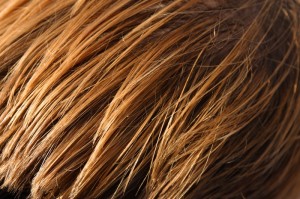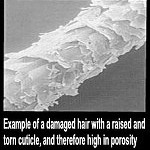Hair Physiology Dallas
The appearance and function of the hair shaft can be affected by porosity, elasticity, and texture.
Hair Porosity
 Porosity is defined as the hair shaft’s ability to absorb moisture. Without cuticular damage, the hair shaft is relatively impermeable to water and other substances. With changes caused by permanent waves, coloring, temperature or pH changes, the cuticle can be rendered more vulnerable permitting penetration and damage to the cortex. With repeated injury, the cuticle can be rendered permanently damaged allowing moisture to escape and making the hairy dry, brittle, and exhibit split ends.
Porosity is defined as the hair shaft’s ability to absorb moisture. Without cuticular damage, the hair shaft is relatively impermeable to water and other substances. With changes caused by permanent waves, coloring, temperature or pH changes, the cuticle can be rendered more vulnerable permitting penetration and damage to the cortex. With repeated injury, the cuticle can be rendered permanently damaged allowing moisture to escape and making the hairy dry, brittle, and exhibit split ends.



Hair Elasticity
Hair Elasticity measures the tensile strength of the hair with a normal hair able to stretch to about 1 and 1/3 its original length with healthy hair able to support a 100-g weight without breaking. Elasticity is dependent upon a healthy cortex, and a hair shaft that has poor elasticity can break easily with grooming and with product application.
Hair Texture
Hair Texture is affected by two determining factors: the thickness of the hair shaft and the feel of the hair itself. Wiry hair possesses its characteristics by virtue of the tight adhesion of the cuticle to the cortex and the flat arrangement of the cuticular scales. Wiry hairs may be more resistant to chemical alteration.
Hair Permeability
Hair Permeability is affected by the degree of porosity, elasticity, and texture of the hair shaft with the porosity and texture having the major influences on permeability. Porosity clearly plays a greater role than texture. However, fine hair will absorb more applied product than coarse hair given the same degree of porosity. Coarse hair with great porosity will still have greater permeability than fine hair with low porosity.




